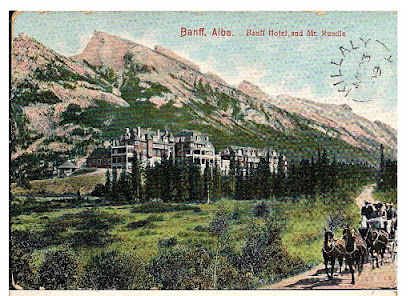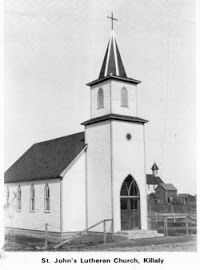52 Ancestors in 52 Weeks
Week 34
Prompt - Chosen Family
Leonhard and Katarina Dyck first born was Leonhard Leonhard Dyck and his birth is listed as “abt. 1802” which is based on the marriage date of 1801. Again I presume he was born in Stobbendorf, West Prussia given that is where his father died 9 years later.
Leonhard Leonhard Dyck married Justina Hiebert. The 1835 Molotschna Census lists him at Lichtenau #27, and says he came to Russia in 1829. He was the Dueck / Dyck who immigrated to Russia from West Prussia. He moved to Molotschna colony. This colony was the second Mennonite colony in Russia which began in 1804.
Leonhard Leonhard and Justina had 7 children. Their youngest child was Johann Dueck / Dyck born April 16, 1844. Johann married Helena Peters September 2, 1866 in Russia. They had 15 children. The first 5 were born in Russia. They immigrated to Canada. Their departure was from Hamburg on July 2, 1875 and they arrived in Quebec on July 19, 1875. They travelled on to their colony in Manitoba. The youngest two children died on the same day, August 18, 1875. Just one month after arrival. Their 6th child was born in Manitoba on September 6, 1875. He died less than one month later on October 1, 1875. So tragic. Johann Dueck died November 17, 1909 in Saskatchewan (Swift Current Colony). Helena died March 3, 1918 in Saskatchewan.Johann and Helena's 9th child was Elisabeth Dueck / Dyck. She was born January 11, 1881 in Manitoba. Her birth place has been listed as Borden, Manitoba and West Reserve, Manitoba. This is my paternal grandmother. However in this Dueck Ancestry line she is the first Dueck / Dyck in my ancestry line.
Elisabeth Dueck (1881 - 1972)Elisabeth Dueck married Franz Peters on February 2, 1902 in Blumenthal, Saskatchewan, NWT. This was in Hague, Saskatchewan. They had 12 children. My father, Jacob Peters was their 9th child born March 28, 1917 in Hague, Saskatchewan.
Elisabeth and Franz moved off the farm and into Saskatoon in the late 1920's. Franz Peters died April 15, 1952 in Saskatoon. Shortly after he died, Elisabeth and a few of her children moved out to Vancouver. Elisabeth died January 16, 1972 in Vancouver.
I chose to explore the Dueck / Dyck family because it is a branch of my family that I know so little about. I want to go back over this family line and learn more. There is always more to learn. This is just a synopsis.
Wendy


















